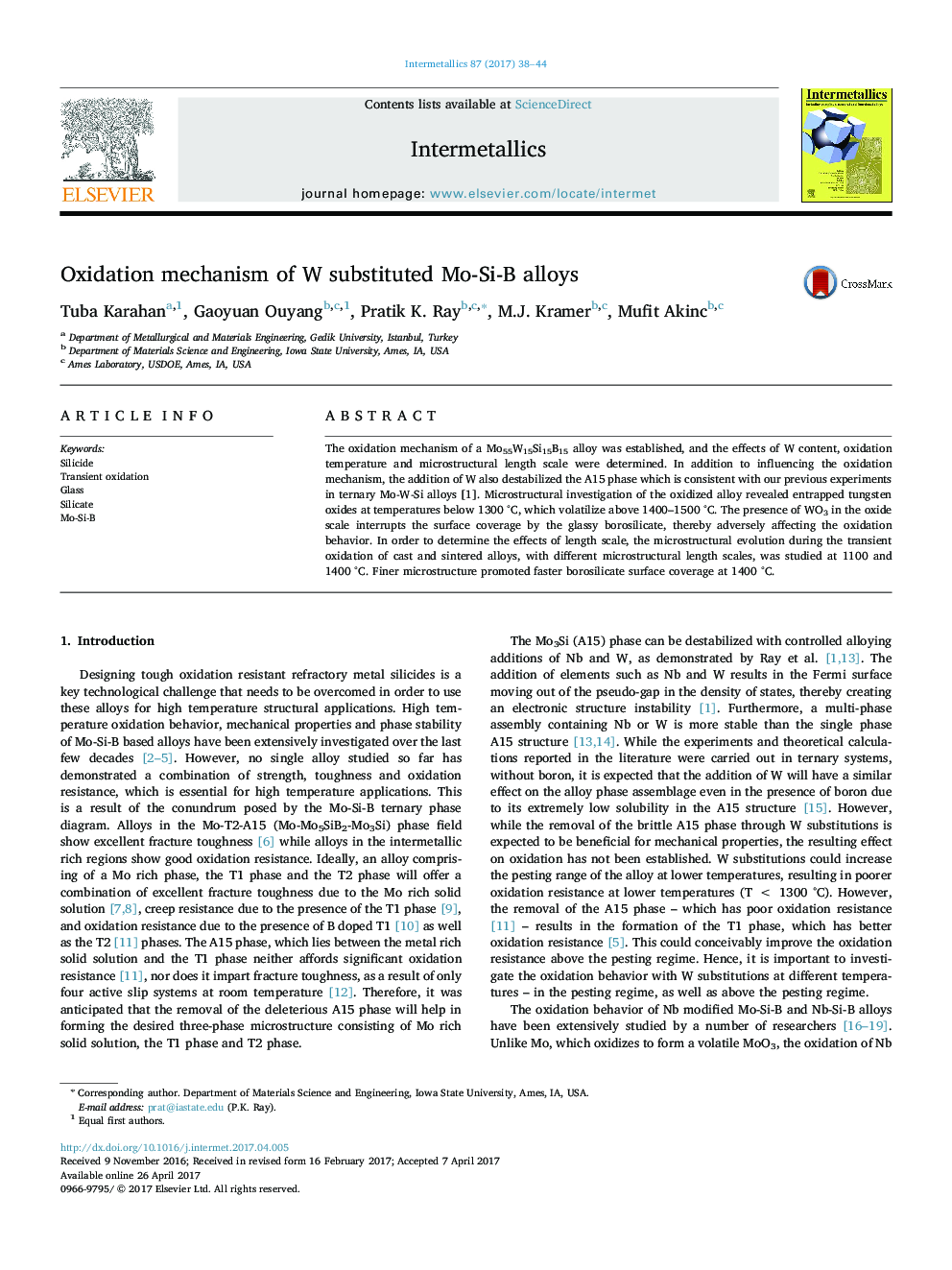| Article ID | Journal | Published Year | Pages | File Type |
|---|---|---|---|---|
| 5457668 | Intermetallics | 2017 | 7 Pages |
Abstract
The oxidation mechanism of a Mo55W15Si15B15 alloy was established, and the effects of W content, oxidation temperature and microstructural length scale were determined. In addition to influencing the oxidation mechanism, the addition of W also destabilized the A15 phase which is consistent with our previous experiments in ternary Mo-W-Si alloys [1]. Microstructural investigation of the oxidized alloy revealed entrapped tungsten oxides at temperatures below 1300 °C, which volatilize above 1400-1500 °C. The presence of WO3 in the oxide scale interrupts the surface coverage by the glassy borosilicate, thereby adversely affecting the oxidation behavior. In order to determine the effects of length scale, the microstructural evolution during the transient oxidation of cast and sintered alloys, with different microstructural length scales, was studied at 1100 and 1400 °C. Finer microstructure promoted faster borosilicate surface coverage at 1400 °C.
Related Topics
Physical Sciences and Engineering
Materials Science
Metals and Alloys
Authors
Tuba Karahan, Gaoyuan Ouyang, Pratik K. Ray, M.J. Kramer, Mufit Akinc,
